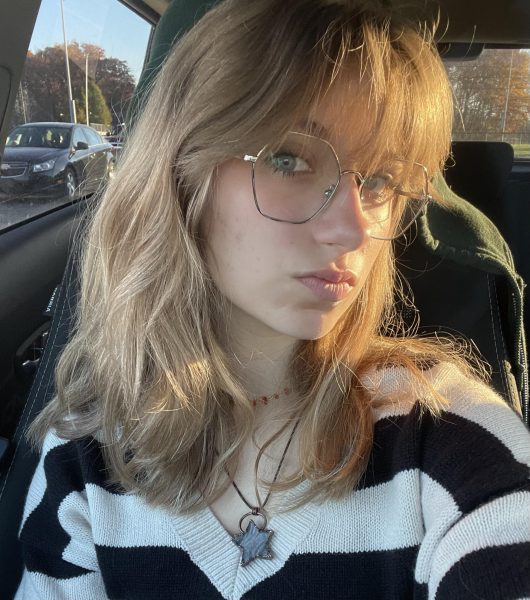Pagan’s Perspective on Halloween
October 14, 2022
Halloween is known for ghosts, ghouls, and most of all, witches. But witches aren’t just old ladies with green skin and warts from old tall tales, they still exist and thrive today. Today, witches in society most commonly identify with the religion known as Paganism, or a denomination that’s more known as Wicca. Wicca is a nature-based religion and therefore, Wiccans have a deep understanding and love for the Earth and all it stands for. They believe that they were part of nature, not separate from it or above it. In Paganism, everything is tied to the annual rebirth and death of the Sun.
The death of the Sun is what brings us into the dark half of the year, while the rebirth brings us to the light half of the year. The light and dark half of the year ties into the belief that we are part of nature, as the dark half of the year is where masculine energy in the self is more prominent, contrasting with the light half of the year, which is where the self’s feminine energy takes the reins. In simpler terms, think of the God predominating in the winter, or dark half, while the Goddess predominates in the summer or light half. Though, in neither half should it be thought that one deity is supreme, as there cannot be masculine without feminine and the other way around as well.
The landmark days of the yearly death and rebirth formally mark the beginnings and middles of the equinoxes and solstices. The beginnings of the seasons are labeled as Lesser Sabbats, which celebrate the seasonal changes of the Earth. The middle of the seasons is when practices and rituals become more prominent and practiced. These middle times are called the Great Sabbats and one of the most popular ones is approaching quickly.
Labeled the festival of darkness, Samhain is considered the prime time to connect with loved ones who passed on, as well as pay respects to those people. This is due to the belief that the veil between our world and the afterlife is at its thinnest, making connections with spirits much easier and more common. Samhain falls on the opposite point of the Wheel of the Year, making it the opposite of the festival Beltane, the festival of light and fertility. While Beltane brings the year into the light half, Samhain brings it into the dark half.
Whether a witch is in a coven or practices alone, most witches do something to celebrate the years passing into the dark side of the year by hosting a ritual, small or large. Every witch practices differently and therefore, celebrates differently. Usually, Wiccans will have an altar set up to show appreciation to their ancestors that’s been decorated with their loved one’s favorites. If no ancestral altar is set up, an altar to Mother Earth will be set up with pumpkins, candles, corn, and the autumnal works to give back to the land. A potpourri may be used as well to make the house smell inviting to their ancestors or just to get in the Samhain spirit. Journaling about intentions of the dark half of the year and reflections of the light half are also welcomed. As the day moves along and the moon rises, some may go outside to meditate under the moon or light a bonfire and have a cleansing ceremony. This time is considered one of the strongest points in the year to release weaknesses and embrace new parts of yourself.
Even if you are not Wiccan-identifying or have no idea, it doesn’t hurt to try new things around Samhain, or Halloween, to better understand the world around you and yourself. You can still enjoy Halloween festivities while doing these things as well!
*Disclaimer: This is how I, as a practicing Pagan, view Samhain! Everyone has their own way of doing it and I am not saying this is how it should be done.*

